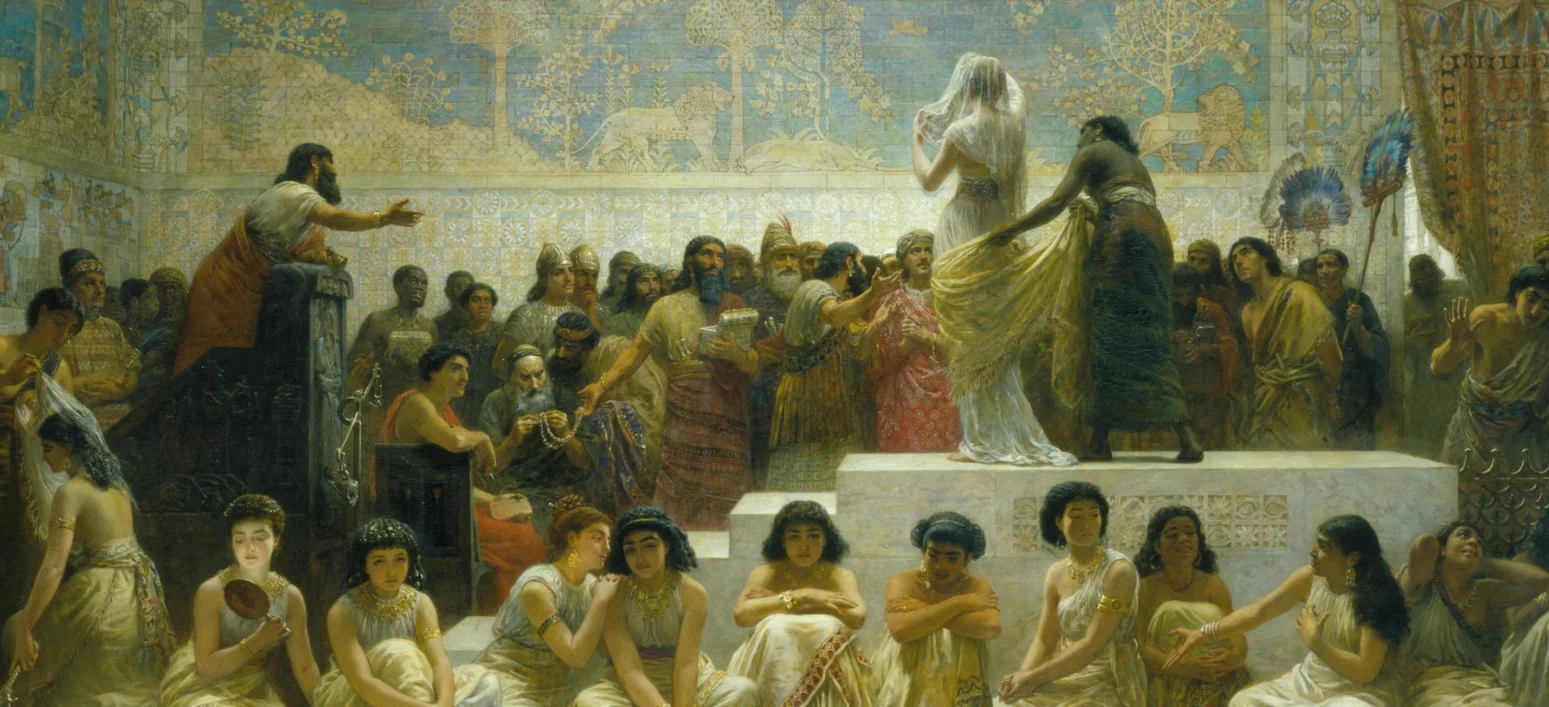
Edwin Long: The Babylonian Marriage Market . 1875.
This monumental canvas, measuring 172 x 304 cm, was created by Edwin Long, one of the most popular salon painters of the Victorian era and amongst the most successful painters of the late nineteenth century. Notably, The Babylonian Marriage Market fetched an astounding £6,615 at the time, setting a record for the highest price paid for the work of a living artist.
As an artist, maintaining public popularity required not only exceptional brushwork but also knowing how to cater to their preferences and prevailing trends. These trends included depictions of ancient history, opulence, grandeur, dramatic scenes, and timely controversies bordering on light scandal.
In 1875, Britain was engulfed in the struggle for women's rights—women were gaining financial independence from their husbands, heated debates raged about women's education, and there were fervent discussions about granting women the right to vote.
The temptation to ride the wave of a hot topic is understandable, not just for bloggers in the modern context. In the nineteenth century, the situation was similar—if you and your works were being passionately discussed, you could become famous and wealthy. And so, Edwin Long found himself in the thick of it with The Babylonian Marriage Market. The subject of his work was inspired by this excerpt from Herodotus’s Histories:
‘The most sensible custom, in my opinion, was as follows: once a year in each village, they usually did the following: they gathered all the girls of marriageable age in one place. Crowds of young men surrounded them, and the herald made each girl stand up by herself, and the sale of brides began. First, they put up the most beautiful girl of all for sale. Then, when she was sold for a large sum of money, the herald called another, the next most beautiful after her (the girls were sold into marriage). Wealthy Babylonian grooms vied with each other to raise the price and buy the most beautiful girls. However, grooms from the common folk, who did not appreciate beauty, would marry even the most plain-looking girls and often received money along with them. After selling the most beautiful girls, the herald commanded the most ugly girl or a crippled girl to stand up and offered her for marriage, starting with the smallest sum of money until someone agreed to take her with the smallest dowry. The money raised from the sale of beautiful girls helped marry off the plainest-looking girls and cripples ... This finest custom no longer exists among them’.i
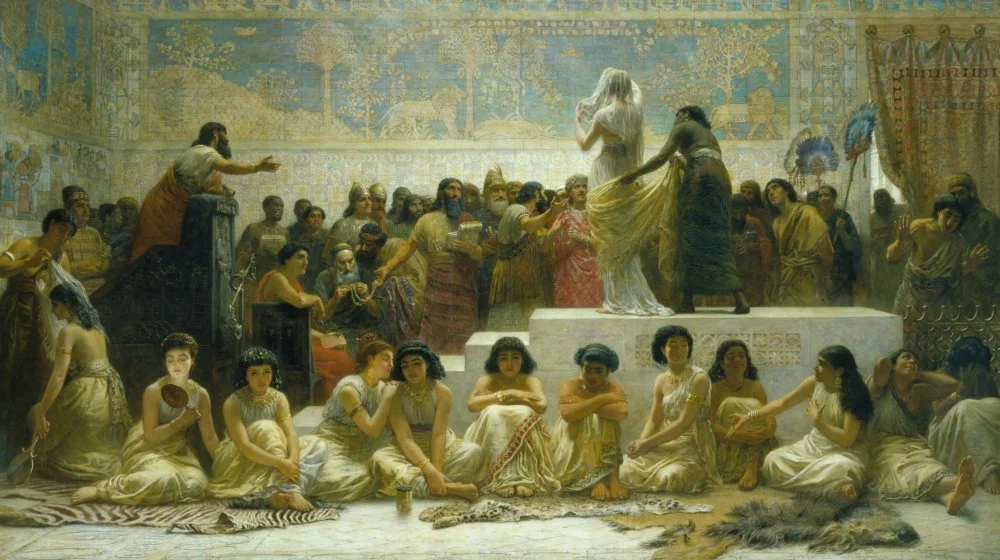
Edwin Long: The Babylonian Marriage Market . 1875.
Modern historians are extremely skeptical about the reliability of this information, categorizing it as the kind of tales often told by great historians who were also travelers. The image of women being auctioned off like goods resonated deeply with the European public, particularly with the most progressive circles, who vehemently opposed such practices. In addition, the idea of ‘beauties marrying off less attractive women’ was not unheard of in Britain. In some families, the more attractive daughters did have their dowries reduced in favor of their less beautiful sisters. And thus, the painting caused a stir and was deemed bold and socially significant.
In The Babylonian Marriage Market, the meticulously depicted Babylonian patterns, drawn from museum specimens, don't convincingly transport us to the ancient world. This is partly due to the unmistakable setting of a Victorian-era auction house. Male buyers are relegated to the background and do not exhibit any expressiveness—they merely hint at archetypes like the ‘admiring lover’, ‘wealthy old man’, ‘important nobleman’, and ‘timid pauper’. However, each of the baker’s dozen of brides evokes a desire for careful scrutiny. We only see the most beautiful one from behind as she is being presented to the buyers first. The perfection of her beauty can be inferred from the men's admiring faces and the value of the jewels they offer as bids to the appraiser.
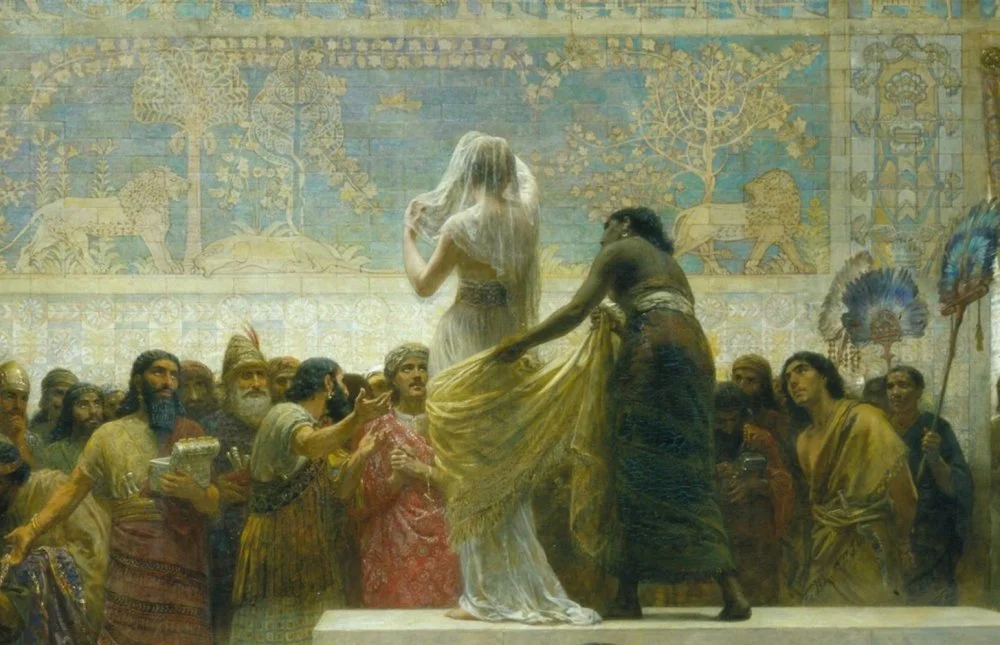
We also don't see the girl acknowledged as the least attractive. She is depicted in a state of despair, covering her face with her hands, trying to hide her shame, and has retreated to the darkest corner. There, she is being cautiously observed by a poorly dressed young man who clearly came here more out of seeking a means of survival than the joys of matrimony.
However, the girl sitting next to her, considered ‘the second-least attractive’, appears cheerful and unperturbed. It seems as if she has long accepted her lack of beauty, and the proceedings clearly amuse her. Her neighbors are also animated, eagerly anticipating leaving the establishment as lawful wives, with a dowry to boot. Their husbands will not be officials, but farmers and servants. But the young ladies had no other expectations—they knew their fate well in advance. They are calm and more engrossed in chatting with each other than in the events of the auction.
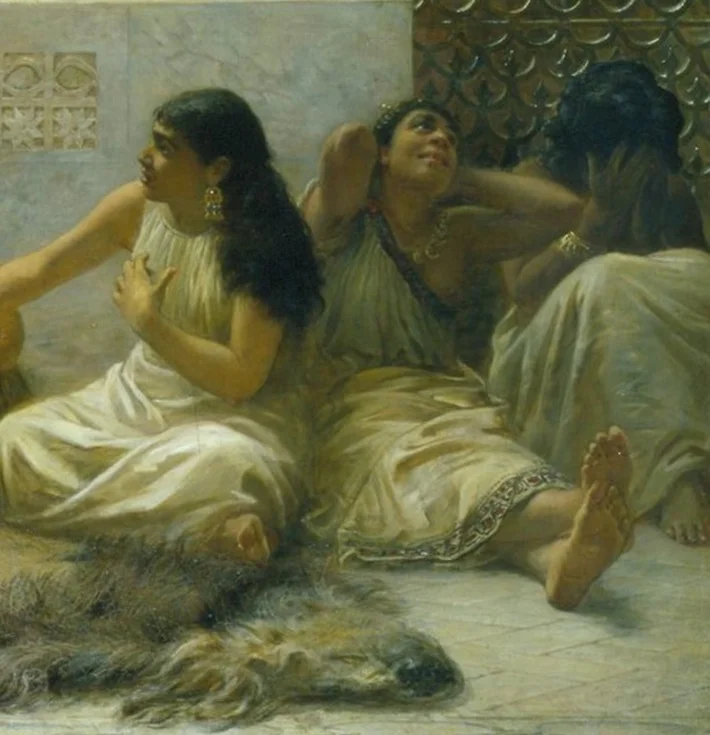
Detail of The Babylonian Marriage Market by Edwin Long. 1875.
In contrast, the girls ranked in the top three are saddened and hurt that they were not crowned the most beautiful. The girls in the center appear more tense and anxious than the others as their fate and future well-being are still unknown to them.
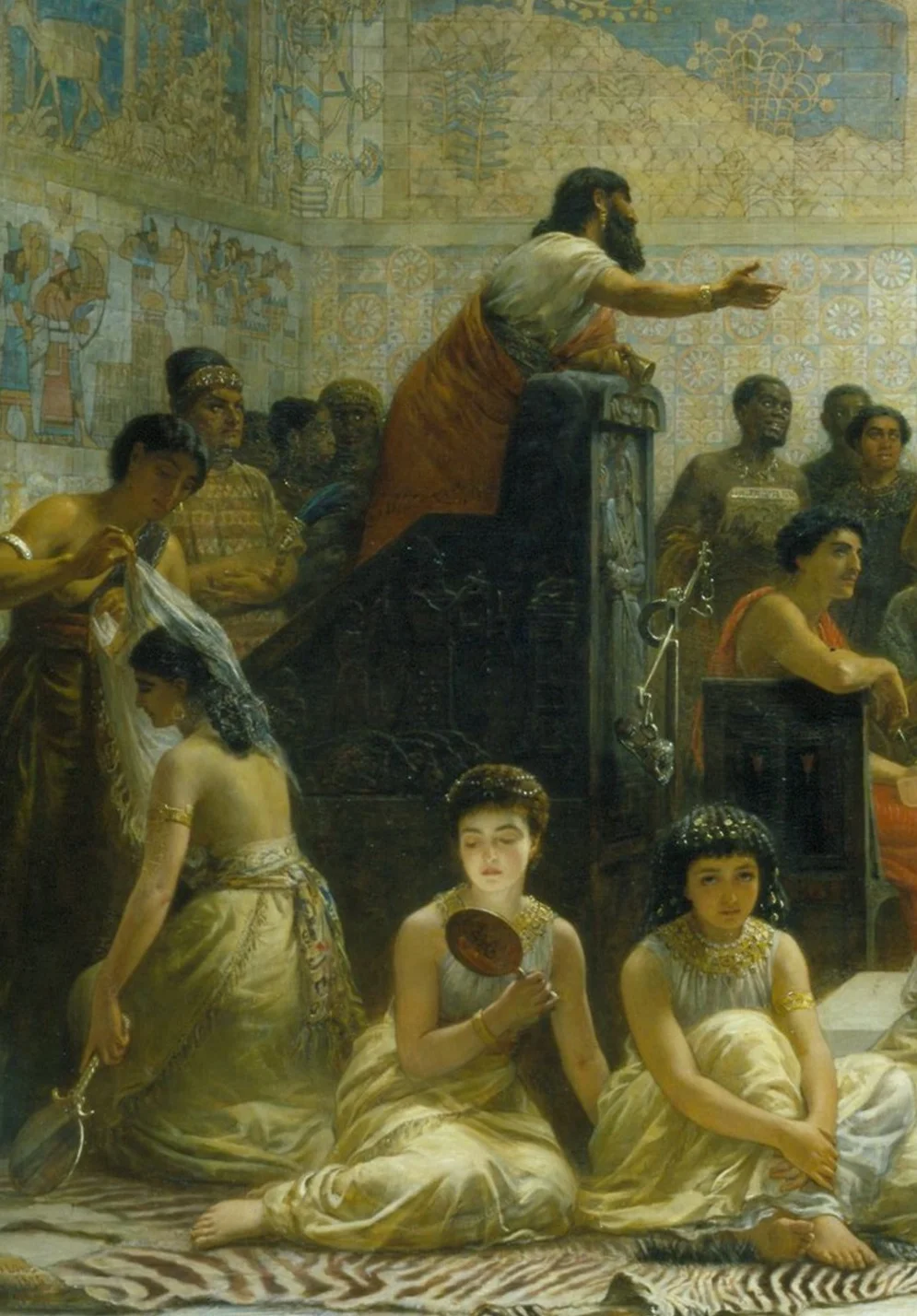
Detail of The Babylonian Marriage Market by Edwin Long. 1875.
Currently, it's hard to find Edwin Long's name on lists of the most significant artists, even of his own era, as his importance in the history of painting turned out to be, unfortunately, less substantial than the fortune amassed by the artist. Nevertheless, in recent years, his name has been mentioned more and more often—the internet has rediscovered him, and he now appeals to a much broader, albeit less discerning, audience, who quite enjoy the beautiful ladies, marvelous interiors, and captivating plots that the painter executed so masterfully.
After all, if one looks at the painting not through the eyes of an art critic but simply as a spectator, it certainly captures the attention and ignites the imagination.
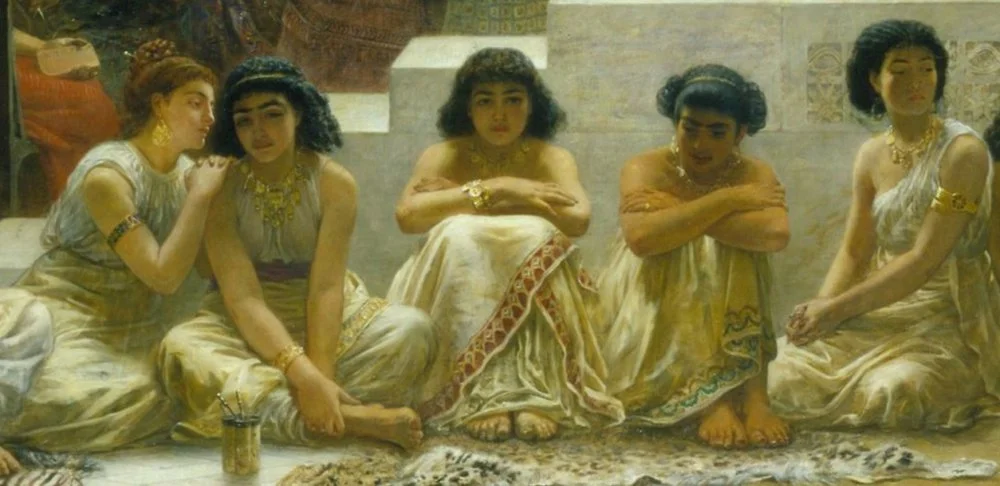
Detail of The Babylonian Marriage Market by Edwin Long. 1875.